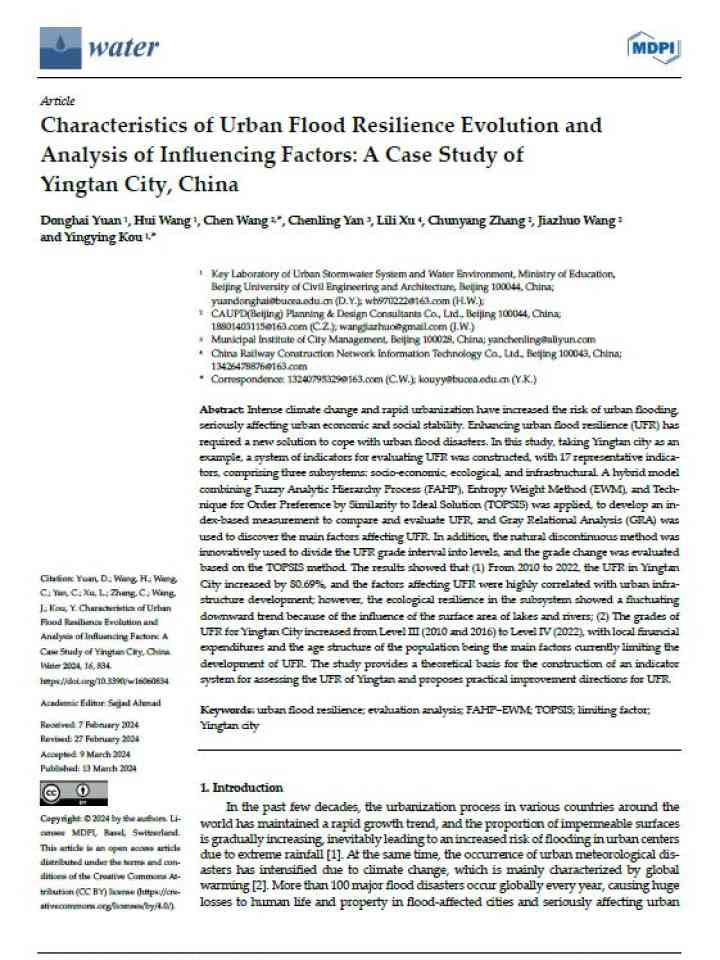Characteristics of urban flood resilience evolution and analysis of influencing factors: a case study of Yingtan City, China
In this study, taking Yingtan city as an example, a system of indicators for evaluating Urban Flood Resilience (UFR) was constructed, with 17 representative indicators, comprising three subsystems: socio-economic, ecological, and infrastructural. Intense climate change and rapid urbanization have increased the risk of urban flooding, seriously affecting urban economic and social stability. Enhancing urban flood resilience (UFR) has required a new solution to cope with urban flood disasters.
The results showed that (1) From 2010 to 2022, the UFR in Yingtan City increased by 80.69%, and the factors affecting UFR were highly correlated with urban infrastructure development; however, the ecological resilience in the subsystem showed a fluctuating downward trend because of the influence of the surface area of lakes and rivers; (2) The grades of UFR for Yingtan City increased from Level III (2010 and 2016) to Level IV (2022), with local financial expenditures and the age structure of the population being the main factors currently limiting the development of UFR. The study provides a theoretical basis for the construction of an indicator system for assessing the UFR of Yingtan and proposes practical improvement directions for UFR.
Explore further
